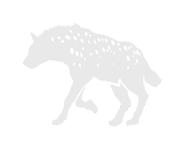Zebra Most Popular to People
According to NationalGeographic.Com, there are two species of Zebra in Southern Africa, the Plains (or Burchell’s) Zebra and the Mountain Zebra. Visitors on safari in South Africa will find the latter, yet, there are three species throughout Africa. As the names suggest they occur in vastly differing habitats, although they are known to occur together in places where plains and mountains overlap. Grevy’s Zebra is the third specimen and found in East Africa which is the sole species of subgenus Dolichohippus. The latter resembles an ass, to which it is closely related, while the former two are more horse-like. All three belong to the genus Equus, along with other living equids (horse family). Burchell’s Zebras are the most common species. They live in small family groups consisting of a male (stallion), several females, and they’re young. Zebras are social animals that spend time in herds. They graze together, primarily on grass, and even groom one another.
Zebras must be constantly wary of lions and hyenas. A herd has many eyes that are alert to danger. If an animal is attacked, its family will come to its defence, circling the wounded zebra and attempting to drive off predators. The patterns may make it difficult for predators to identify a single animal from a running herd and distort distance at dawn and dusk. The skin may discourage insects that recognize only large areas of single-coloured fur or act as a kind of natural sunscreen. Unlike their closest relatives, horses and donkeys, Zebras have never been truly domesticated.
No animal has a more decorative coat than the Zebra with its distinctive black and white striped coats. The unique stripes of Zebras make them one of the animals most familiar to people. Each animal’s stripes are as unique as fingerprints; no two are exactly alike, although each of the three species has its own general pattern.
Scientists are not sure why Zebras have stripes, but many theories centre around the fact of a form of camouflage. Traditional tribes attribute it to a story of a baboon and a Zebra that fought and within the fury of the disagreement the white only Zebra fell into the fire, burning the stripes. It could also be that the unique stripes may also help Zebras recognize one another.
Various human factors had an influence on the existence of Zebras specifically, hunting for skins and habitat destruction. Grévy’s Zebra and the Mountain Zebra are endangered. Thus, conservationists focus on the Zebra not to go extinct. While Plains Zebras are plentiful, one subspecies, the Quagga, became extinct in the late 19th century.


